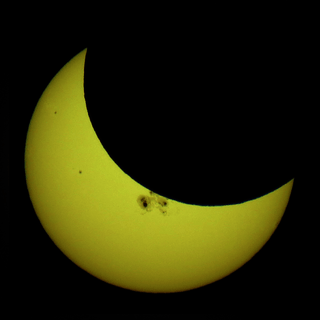Solar eclipse of May 20, 2069
A partial solar eclipse will occur on May 20, 2069. A solar eclipse occurs when the Moon passes between Earth and the Sun, thereby totally or partly obscuring the image of the Sun for a viewer on Earth. A partial solar eclipse occurs in the polar regions of the Earth when the center of the Moon's shadow misses the Earth.
| Solar eclipse of May 20, 2069 | |
|---|---|
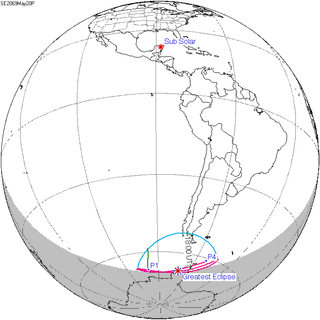 Map | |
| Type of eclipse | |
| Nature | Partial |
| Gamma | -1.4852 |
| Magnitude | 0.0879 |
| Maximum eclipse | |
| Coordinates | 68.8°S 69.9°W |
| Times (UTC) | |
| Greatest eclipse | 17:53:18 |
| References | |
| Saros | 158 (1 of 70) |
| Catalog # (SE5000) | 9662 |
This event will mark the beginning of Solar Saros 158.
This is the third eclipse this season.
First eclipse this season: April 21, 2069 – Partial Solar Eclipse
Second eclipse this season: May 5–6, 2069 – Total Lunar Eclipse
Related eclipses
Solar eclipses 2065–2069
This eclipse is a member of a semester series. An eclipse in a semester series of solar eclipses repeats approximately every 177 days and 4 hours (a semester) at alternating nodes of the Moon's orbit.[1]
| 118 | July 3, 2065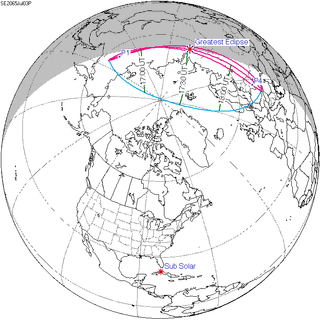 Partial |
123 | December 27, 2065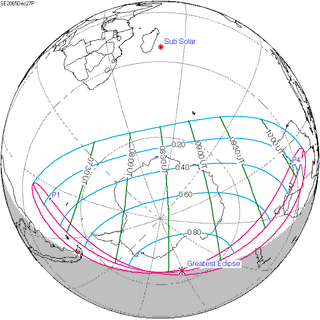 Partial |
| 128 | June 22, 2066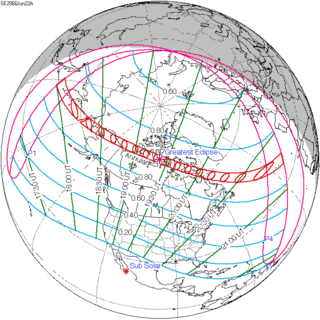 Annular |
133 | December 17, 2066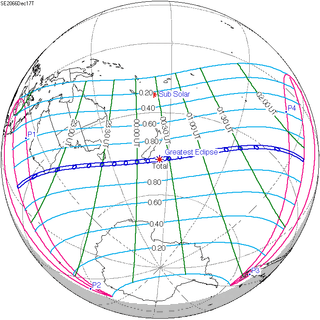 Total |
| 138 | June 11, 2067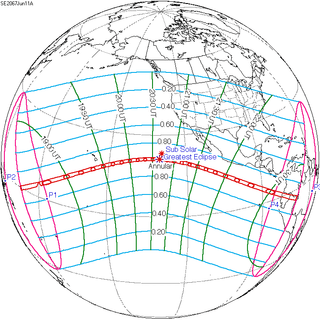 Annular |
143 | December 6, 2067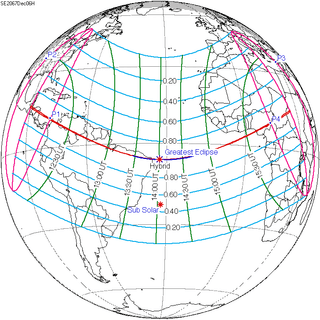 Hybrid |
| 148 | May 31, 2068 Total |
153 | November 24, 2068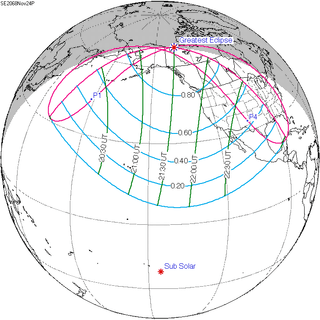 Partial |
| 158 | May 20, 2069 Partial |
Metonic series
The metonic series repeats eclipses every 19 years (6939.69 days), lasting about 5 cycles. Eclipses occur in nearly the same calendar date. In addition, the octon subseries repeats 1/5 of that or every 3.8 years (1387.94 days). All eclipses in this table occur at the Moon's descending node.[2]
| Octon series with 21 events between May 21, 1993 and August 2, 2065 | ||||
|---|---|---|---|---|
| May 20–21 | March 8–9 | December 25–26 | October 13–14 | August 1–2 |
| 98 | 100 | 102 | 104 | 106 |
| May 21, 1955 | March 9, 1959 | December 26, 1962 | October 14, 1966 | August 2, 1970 |
| 108 | 110 | 112 | 114 | 116 |
| May 21, 1974 | March 9, 1978 | December 26, 1981 | October 14, 1985 | August 1, 1989 |
| 118 | 120 | 122 | 124 | 126 |
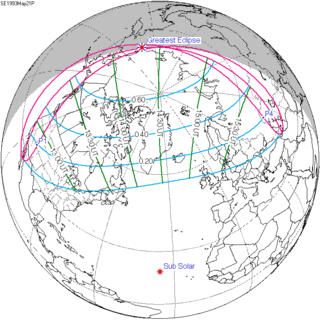 May 21, 1993 |
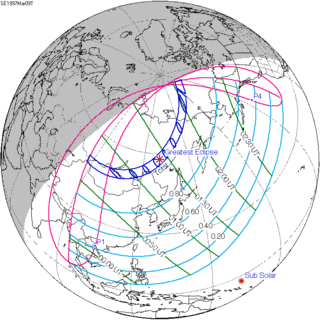 March 9, 1997 |
 December 25, 2000 |
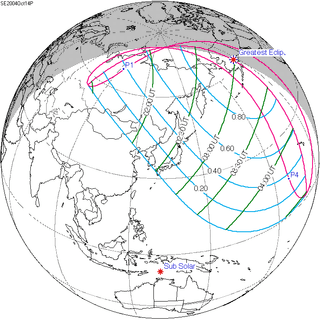 October 14, 2004 |
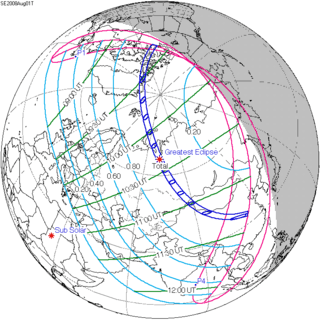 August 1, 2008 |
| 128 | 130 | 132 | 134 | 136 |
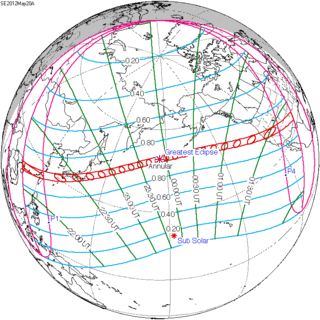 May 20, 2012 |
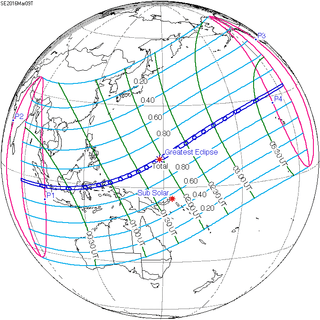 March 9, 2016 |
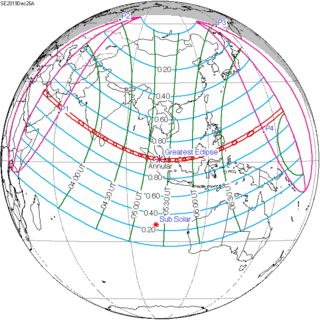 December 26, 2019 |
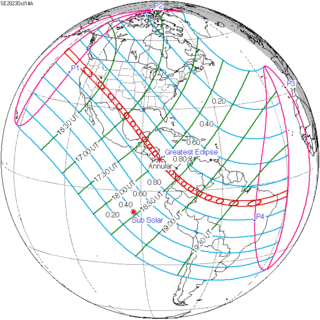 October 14, 2023 |
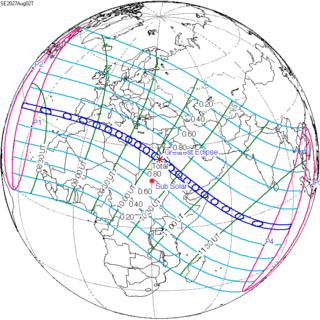 August 2, 2027 |
| 138 | 140 | 142 | 144 | 146 |
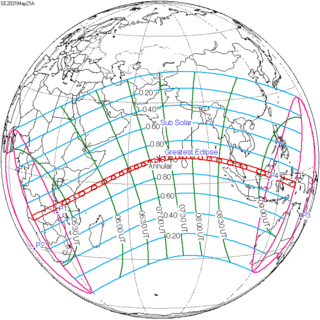 May 21, 2031 |
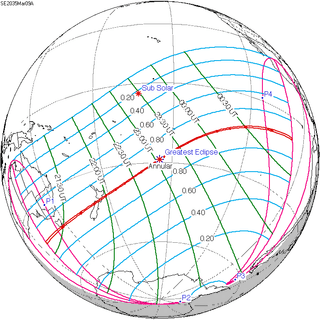 March 9, 2035 |
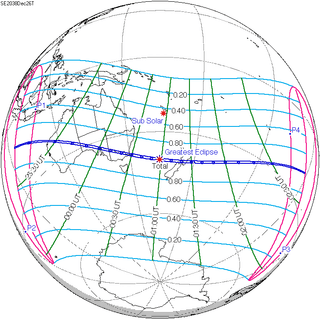 December 26, 2038 |
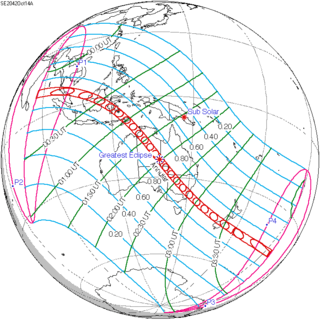 October 14, 2042 |
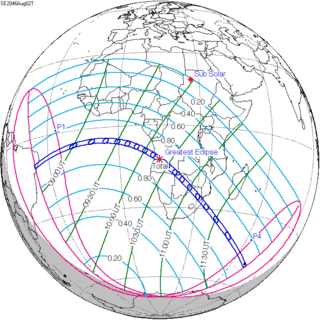 August 2, 2046 |
| 148 | 150 | 152 | 154 | 156 |
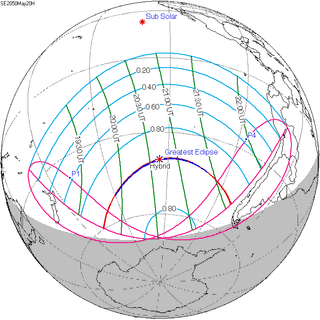 May 20, 2050 |
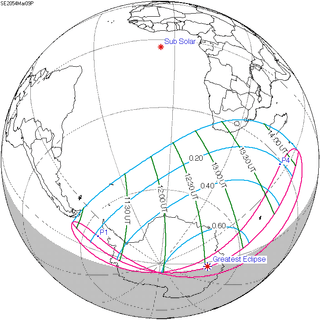 March 9, 2054 |
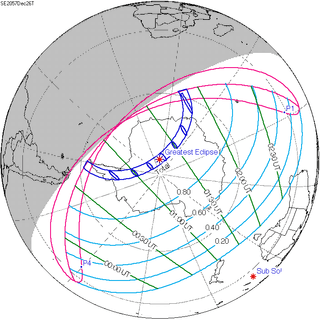 December 26, 2057 |
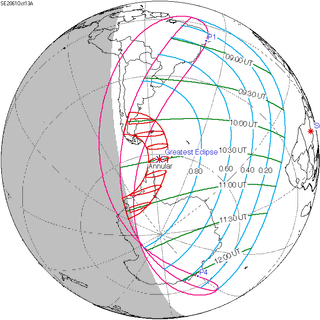 October 13, 2061 |
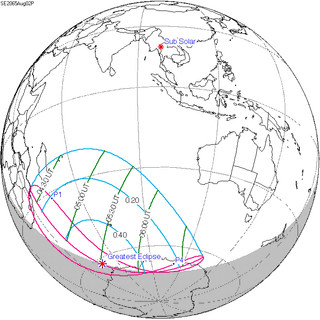 August 2, 2065 |
| 158 | 160 | 162 | 164 | 166 |
 May 20, 2069 |
March 8, 2073 | December 26, 2076 | October 13, 2080 | August 1, 2084 |
References
- van Gent, R.H. "Solar- and Lunar-Eclipse Predictions from Antiquity to the Present". A Catalogue of Eclipse Cycles. Utrecht University. Retrieved 6 October 2018.
- Freeth, Tony. "Note S1: Eclipses & Predictions". plos.org. Retrieved 6 October 2018.
External links
- Earth visibility chart and eclipse statistics Eclipse Predictions by Fred Espenak, NASA/GSFC
.jpg)
